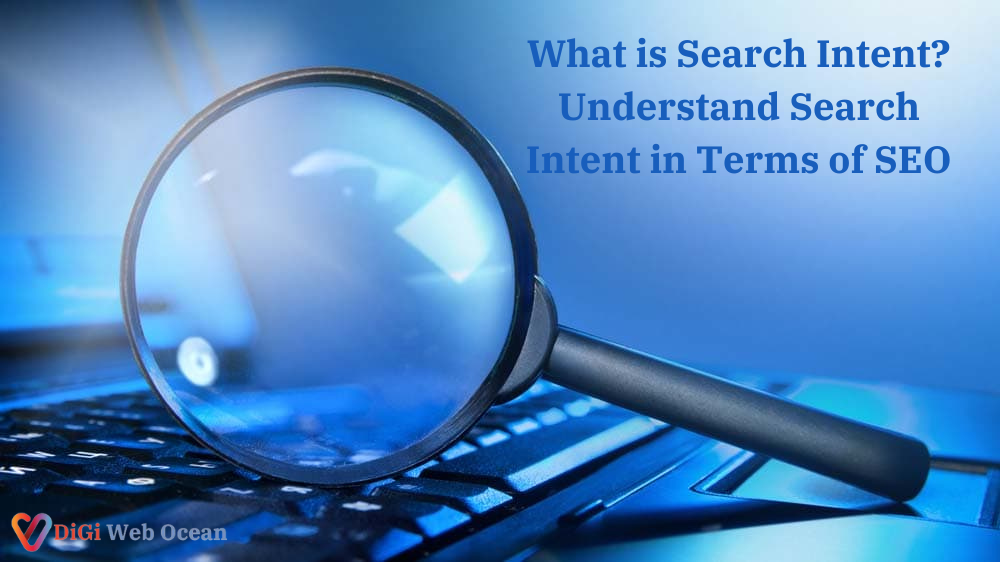What is Search Intent? Understand Search Intent in Terms of SEO
In the vast digital landscape, search engines act as gateways to information. But behind every search query lies an unspoken goal, a reason why someone is looking for something specific. This reason, known as search intent, is crucial for anyone who wants to create content that resonates with online audiences. In terms of digital marketing and search engine optimization (SEO), understanding search intent is crucial for crafting content that resonates with users and ranks well in search engine results. Search intent refers to the underlying motivation or purpose behind a user’s online search query. By analyzing search intent, marketers can tailor their content to meet users’ needs, preferences, and expectations, ultimately driving more targeted traffic to their websites and improving overall user experience.
Understanding Search Intent
Search intent refers to the underlying purpose behind a user’s search query. It’s what the user is hoping to achieve by entering those specific keywords into a search engine. By understanding search intent, you can tailor your content to better meet the user’s needs and improve your chances of ranking higher in search results.
Types of Search Intent:
There are four primary categories of search intent:
- Informational Intent
- Navigational Intent
- Transactional Intent
- Commercial Intent
1. Informational Intent: The Quest for Knowledge
Informational queries are driven by the user’s desire to learn or gain knowledge about a specific topic. They often resemble questions phrased in natural language. Here’s a breakdown of informational intent:
- Keywords: Informational keywords tend to be broad and include question words like “who,” “what,” “when,” “where,” “why,” and “how.” Examples include “Best Pizza Recipes,” “Symptoms of the common cold,” and “History of the internet.”
- User Journey Stage: Users with informational intent are in the early stages of their research journey. They’re seeking to understand a concept, gather facts, or learn how to do something.
- Content Examples: Informational content should be comprehensive and informative. This could include blog posts, articles, explainer videos, infographics, or tutorials.
2. Navigational Intent: A Direct Path
Navigational queries have a clear goal: to reach a specific website or webpage. Users typically know exactly where they want to go and are looking for a direct link.
- Keywords: Navigational keywords often include brand names, unique URLs, or specific page names. Examples include “Facebook login page,” “New York Times website,” or “download Adobe Acrobat.”
- User Journey Stage: Users with navigational intent are further along in their journey. They know the source they trust or have a specific webpage in mind.
- Content Examples: Navigational intent doesn’t necessarily require content creation. Optimizing your website structure and ensuring clear navigation is crucial for users with this intent.
3. Transactional Intent: Ready to Buy
Transactional queries signal the user’s intent to make a purchase or complete a specific action online. These keywords are often action-oriented and indicative of a buying decision.
- Keywords: Transactional keywords frequently include terms like “buy,” “order,” “download,” “subscribe,” or “free trial.” Examples include “buy running shoes online,” “download free ebook,” or “book a hotel room.”
- User Journey Stage: Users with transactional intent are at the end of the research funnel. They’re ready to take action and convert, whether it’s buying a product, signing up for a service, or downloading a resource.
- Content Examples: Landing pages, product descriptions, clear calls to action, and secure checkout processes are essential for transactional intent.
4. Commercial Intent: Weighing the Options
Commercial queries represent the user’s research phase before a purchase decision. They’re actively considering different options, comparing products or services, and potentially looking for reviews or recommendations.
- Keywords: Commercial keywords often include terms like “best,” “reviews,” “compare,” “vs,” or “alternatives.” Examples include “best laptops for students 2024,” “reviews for Samsung Galaxy S23,” or “discount codes for Nike.”
- User Journey Stage: Users with commercial intent are in the middle of their research journey. They’re gathering information, evaluating options, and potentially narrowing down their choices.
- Content Examples: Blog posts with product comparisons, buying guides, reviews, and informative content that addresses user concerns are well-suited for commercial intent.
Understanding these distinct types of search intent allows marketers to tailor their content and SEO strategies to better meet users’ needs and expectations, ultimately improving their website’s visibility, relevance, and effectiveness in search engine results pages (SERPs).
Remember, the lines between these categories can sometimes blur. A single keyword might have elements of multiple search intents. The key is to analyze the user’s query and surrounding context to determine the dominant intent and tailor your content accordingly. By mastering the art of understanding search intent, you can unlock the true potential of your SEO strategy and create content that resonates with your target audience, ultimately achieving your online goals.
Read Also: What Is a Title Tag & How to Optimize Your Title Tags for SEO
Analyzing Search Intent:
To effectively analyze search intent, marketers must consider various factors, including keyword choice, content format, and user behavior. Keyword research tools like Google Keyword Planner and SEMrush provide insights into search volume, competition, and user intent for specific keywords. Additionally, analyzing search engine results pages (SERPs) for a given keyword can reveal the dominant content formats (e.g., articles, videos, product listings) and user preferences.
Here are some tips to help you identify the user intent behind a keyword:
- Analyze the keywords themselves. Informational queries tend to be phrased as questions, while transactional queries often include action verbs.
- Consider the context. Look at surrounding words and phrases in the query. For example, “best pizza places near me” suggests a local search intent, while “history of pizza” leans towards informational.
- Think about the user’s journey. What stage of the buying process is the user in? Are they just starting their research, or are they ready to buy?
Why is User Intent Important?
Understanding user intent is vital for several reasons:
- Content Relevance: By aligning your content with search intent, you ensure it provides the information users are actually looking for. This leads to higher user engagement and satisfaction.
- Search Engine Optimization (SEO): Search engines consider user intent when ranking search results. Content that caters to the user’s goal has a better chance of ranking higher.
- Improved Conversion Rates: When users find content that directly addresses their needs, they are more likely to convert, whether it’s making a purchase, subscribing to a newsletter, or downloading a resource.
Optimizing Content for Search Intent:
Once search intent is understood, marketers can optimize their content to align with user expectations and preferences. This involves creating high-quality, relevant content that satisfies users’ information needs, addresses their pain points, and offers valuable insights or solutions. Content should be well-structured, easy to navigate, and optimized for relevant keywords to enhance its visibility and accessibility to search engine algorithms.
User Intent: The Secret Weapon in Your SEO
Search intent plays a crucial role in SEO (Search Engine Optimization) by helping marketers understand what users are looking for when they enter a search query. User intent refers to the underlying reason behind a user’s search query. It’s what they’re hoping to achieve by entering those specific keywords. By aligning your content with user intent, you build a bridge between what users need and the value your content offers.
Here’s how search intent helps in SEO:
- Content Relevancy: When your content directly addresses the user’s intent, it becomes more relevant and engaging. This leads to higher user satisfaction, longer dwell time on your website, and potentially lower bounce rates – all positive signals for search engines.
- Improved Ranking Potential: Search engines prioritize content that fulfills user needs. By understanding intent, you can optimize your content with relevant keywords and answer the questions users are actively searching for. This increases your chances of ranking higher in search results for those specific keywords.
- Targeted Traffic: Understanding intent allows you to attract the right kind of traffic to your website. You’re not just attracting visitors; you’re attracting users who are genuinely interested in what you have to offer, leading to a higher chance of conversions (e.g., sales, signups, downloads).
- Informed Content Strategy: Search intent research can guide your overall content creation strategy. By identifying the questions and topics your target audience is searching for, you can create content that directly addresses their needs and positions you as an authority in your field.
- User Experience: Meeting search intent ensures a positive user experience by providing relevant and valuable content that matches users’ expectations. This helps reduce bounce rates, increase dwell time, and improve overall user engagement, signaling to search engines that the website is trustworthy and authoritative.
Read Also: Surfer SEO Review: Everything You Need to Know
Let’s explore some practical examples:
- Informational Intent: Imagine someone searches for “how to change a tire.” High-quality content targeting this intent would be a well-structured, step-by-step guide with clear instructions and visuals. This directly addresses the user’s need to learn the process.
- Commercial Intent: If a user searches for “best laptops for students,” they’re likely comparing options. A relevant SEO strategy would involve creating content that compares different laptops suited for students, highlighting features and benefits.
- Transactional Intent: A user searching for “buy winter jacket online” has purchase intent. Optimizing product pages with clear descriptions, high-quality images, and secure checkout processes caters to this intent.
By understanding user intent and crafting content that fulfills user needs, you move beyond simply ranking for keywords. You create a valuable user experience that search engines reward and keeps your target audience engaged.
Remember: Search intent is a dynamic concept. User behavior and search trends constantly evolve. Regularly revisit your keyword research and content strategy to ensure you’re aligned with the latest user needs. By wielding the power of user intent, you can unlock the true potential of your SEO efforts and achieve lasting success in the ever-changing digital landscape.
Search Intent FAQs:
Search intent is a fundamental concept in SEO, yet it can sometimes feel shrouded in mystery. So, here are some frequently asked questions (FAQs) to help you navigate the world of search intent and leverage it for SEO success:
What is search intent, and how does it relate to SEO?
Search intent refers to the underlying motivation or purpose behind a user’s online search query. In the context of SEO, understanding search intent is essential for creating content that aligns with users’ needs, preferences, and expectations, ultimately improving the website’s visibility and ranking in search engine results pages (SERPs).
2. How can I determine the user intent behind a specific keyword?
To determine search intent, analyze the type of content that ranks highly for the keyword in question. Look at the search results and identify patterns in the content format (e.g., articles, videos, product listings) and the user’s likely intent (e.g., informational, navigational, transactional). This analysis helps tailor your content strategy to meet users’ intentions effectively.
3. Why is it important to align content with user intent for SEO?
Aligning content with search intent ensures that it meets users’ needs and expectations, leading to higher engagement, lower bounce rates, and improved user satisfaction. Moreover, search engines prioritize content that matches search intent when ranking websites in SERPs, making it crucial for SEO success.
4. How does user intent impact keyword research and selection?
Search intent influences keyword research by guiding the selection of keywords that align with users’ intentions. By choosing keywords that reflect the desired search intent (e.g., informational keywords for informational intent, transactional keywords for transactional intent), marketers can attract more qualified traffic to their website and improve their SEO performance.
5. Can user intent change over time, and how should I adapt my SEO strategy accordingly?
Yes, search intent can evolve as user behaviors, preferences, and market dynamics change. To adapt your SEO strategy accordingly, stay updated on trends, monitor changes in search engine algorithms, and regularly analyze search results for your target keywords. Adjust your content strategy and keyword targeting to align with evolving search intent and user expectations.
6. How can I optimize my website for multiple types of user intent?
To optimize your website for multiple types of search intent, create diverse content that addresses various user needs and preferences. Incorporate a mix of informational, navigational, and transactional content, and ensure that each piece aligns with the corresponding search intent. Additionally, optimize your website structure, metadata, and internal linking to enhance relevance and accessibility across different search intents.
7. What role does user experience (UX) play in meeting search intent for SEO?
User experience is crucial in meeting search intent for SEO, as it directly impacts how users interact with your website and content. Providing a seamless, intuitive, and engaging user experience helps satisfy users’ needs and expectations, leading to higher rankings, increased traffic, and improved conversion rates.
8. How can I track and measure the effectiveness of my SEO efforts in meeting user intent?
Use tools like Google Analytics, Google Search Console, and SEO analytics platforms to track key metrics related to user engagement, website traffic, and search rankings. Monitor changes in organic traffic, click-through rates (CTR), and conversion rates to assess the impact of your SEO efforts in meeting search intent and achieving your business goals.




Post Comment
You must be logged in to post a comment.